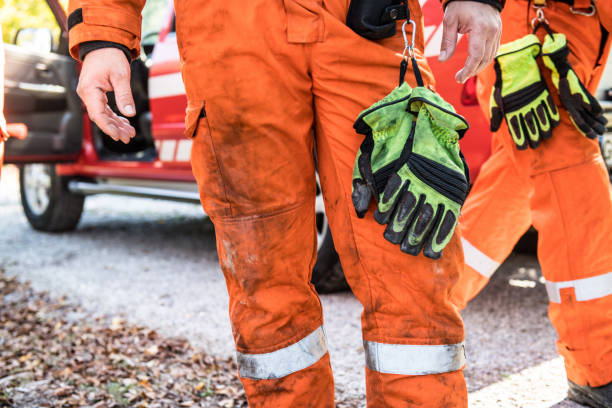How Firefighter Gloves Are Made: Materials, Construction, and Safety Standards
When it comes to firefighting, every piece of protective gear matters—and gloves are no exception. Firefighter gloves are specially engineered to provide heat resistance, durability, dexterity, and comfort while meeting strict international safety standards.
In this article, we’ll take a closer look at how firefighter gloves are made, the materials used, and the standards they must meet to ensure maximum protection for firefighters.
🔹 Materials Used in Firefighter Gloves
The choice of materials is critical to balancing safety, flexibility, and durability. High-quality firefighter gloves usually combine the following layers:
1. Outer Shell
-
Leather (Cowhide or Goatskin): Provides toughness, abrasion resistance, and flexibility.
-
Nomex® or Kevlar® Fabric: Flame-resistant textiles designed to withstand extreme heat.
2. Liner
-
Thermal Insulation: Kevlar® or other flame-retardant materials that protect against heat.
-
Moisture Barrier: A waterproof yet breathable membrane (such as Gore-Tex®) to keep hands dry.
3. Reinforcements
-
Kevlar® Thread: Extremely strong and resistant to heat, used for stitching.
-
Padding: Foam or rubber padding added at knuckles and palms for comfort and impact protection.
4. Cuff
-
Extended Protection: Usually made from Nomex® or leather to shield the wrist and lower arm from heat and flames.
🔹 Step-by-Step: How Firefighter Gloves Are Made
1. Design & Pattern Creation
Gloves are designed based on standard firefighter hand measurements, ensuring both snug fit and dexterity.
2. Cutting the Materials
Outer shell, liner, and reinforcement pieces are precisely cut according to the pattern. Extra allowance is left for stitching seams.
3. Sewing the Layers
-
Liner pieces are stitched together first.
-
Outer shell is sewn with Kevlar® thread for added durability.
4. Adding Reinforcements
High-stress areas (palms, fingertips, and knuckles) receive additional leather or protective padding.
5. Cuff Assembly
The extended cuff is securely attached to block flames and debris.
6. Final Assembly
The glove is turned inside out, checked for defects, and closure mechanisms (like Velcro) may be added for a tighter fit.
7. Quality Testing
Every batch undergoes flexibility, heat resistance, and water resistance tests to ensure compliance with firefighting safety standards.
8. Finishing Touches
Leather gloves are conditioned to maintain softness and long-term durability.
🔹 Safety Standards for Firefighter Gloves
Firefighter gloves must comply with strict safety certifications such as:
-
NFPA 1971 (USA): Standard for protective clothing and gloves for firefighting.
-
EN 659 (Europe): Specifies performance requirements for firefighting gloves.
Compliance ensures gloves can withstand high temperatures, water penetration, cuts, and abrasions while allowing sufficient flexibility.
🔹 Why Certified Gloves Matter
While it’s possible to understand how gloves are made, producing them requires specialized materials, advanced machinery, and strict testing. For professional use, it is always recommended to purchase certified firefighter gloves from approved suppliers to guarantee safety and compliance.
At Fire Hunter Co., we provide Civil Defense approved firefighter gloves and other safety equipment in the UAE, ensuring firefighters and safety officers are always protected with the best gear.
📞 Contact Fire Hunter Co.
Looking for certified firefighter gloves in Dubai or anywhere in the UAE?
Reach out to us today:
-
Phone: +971 54 337 0006
-
Email: admin@firehunter.co
-
Website: firehunter.co
Final Thoughts
Firefighter gloves are not just simple protective wear—they are lifesaving equipment. With the right combination of materials, construction, and safety testing, they provide the protection and dexterity firefighters need to perform in extreme conditions.
👉 For high-quality, Civil Defense approved firefighter gloves in UAE, trust Fire Hunter Co. to supply the best.

